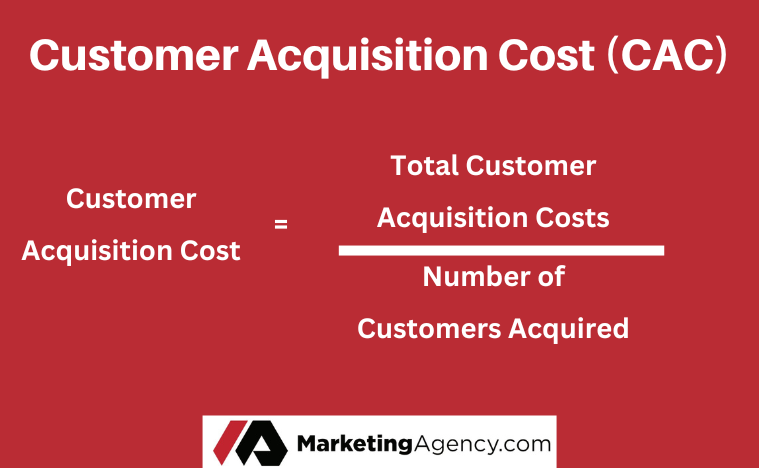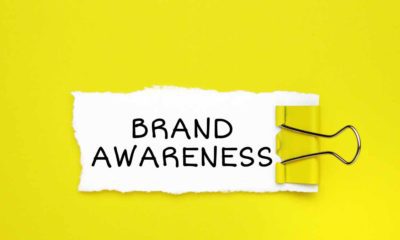Featured
Customer Acquisition Cost (CAC): Your Ultimate Guide
Acquiring new customers is a crucial aspect of any business. However, it’s also important to understand the cost associated with it. In this article, we will explore the concept of Customer Acquisition Cost (CAC), its importance, the factors affecting it, and how to calculate and optimize it. Get ready to dive into the ultimate guide to CAC marketing.
What is Customer Acquisition Cost (CAC)?
Customer Acquisition Cost (CAC) is the total cost of acquiring a new customer, including all marketing and sales expenses incurred to convert a prospect into a paying customer. It is an essential metric for businesses to measure the effectiveness and efficiency of their customer acquisition strategies.
Importance of CAC in Business
Understanding your CAC is vital for several reasons:
- Profitability: Knowing your CAC helps you determine if your customer acquisition efforts are sustainable and profitable. If your CAC is higher than the lifetime value of a customer, your business might be at risk.
- Resource allocation: Tracking CAC helps you identify the most effective marketing channels and allocate resources accordingly.
- Growth strategies: A clear understanding of your CAC enables you to make informed decisions about expansion, new product development, and pricing strategies.
[Read More] CRO Marketing 101: A Beginner’s Guide to Improving Conversion Rates
Factors Affecting CAC
Several factors can impact your CAC:
- Marketing and advertising costs: Your marketing expenses play a significant role in determining your CAC.
- Sales team expenses: Salaries, commissions, and other sales-related expenses also contribute to your CAC.
- Overhead costs: Don’t forget to include overhead costs, such as office rent, utilities, and software subscriptions, when calculating your CAC.
CAC Formula
The CAC formula is simple:
CAC = Total Customer Acquisition Costs / Number of Customers Acquired
How to Calculate CAC
To calculate your CAC, follow these steps:
- Identify all the costs associated with acquiring new customers, including marketing, sales, and overhead expenses.
- Determine the number of customers you acquired during the same period.
- Divide the total costs by the number of customers acquired to find your CAC.
CAC Benchmarks
CAC benchmarks vary by industry and business size. However, a common benchmark is the 3:1 LTV:CAC ratio, meaning the lifetime value of a customer should be at least three times the cost of acquiring them.
Lowering Your CAC
Here are some strategies to help you lower your CAC:
Improve Targeting and Segmentation
Refine your target audience and segment your prospects to create personalized marketing campaigns that resonate with them.
Optimize Marketing Channels
Analyze the performance of each marketing channel and focus on those that deliver the best results. Continuously test and optimize your campaigns to reduce inefficiencies and increase return on investment (ROI).
Enhance Website User Experience
A well-designed website with clear calls to action, easy navigation, and fast loading times can improve conversion rates, ultimately lowering your CAC.
Leverage Content Marketing
Creating valuable and engaging content can help you attract and retain customers without incurring high advertising costs. Implement a solid content marketing strategy to educate, inform, and entertain your target audience.
Implement Referral Programs
Lastly, referral programs encourage your existing customers to recommend your product or service to their friends and family. This word-of-mouth marketing can significantly lower your CAC while increasing customer loyalty.
Monitoring and Analyzing CAC
Also, regularly monitoring and analyzing your CAC is crucial for the long-term success of your business. Keep an eye on changes that continue in your CAC over time and use it as a key performance indicator (KPI) to inform your marketing and growth strategies.
[Read More] What Is Marketing Attribution? Your Must-Read Guide
Bottom Line
All in all, understanding and optimizing your Customer Acquisition Cost is an essential aspect of running a successful business. By calculating your CAC, monitoring its fluctuations, and implementing strategies to reduce it, you can ensure the long-term profitability and growth of your business.
FAQs
Q: What is the ideal Customer Acquisition Cost (CAC)?
The ideal CAC varies by industry and business size. A common benchmark is the 3:1 LTV:CAC ratio, meaning the lifetime value of a customer should be at least three times the cost of acquiring them.
Q: Is a high CAC always bad for a business?
A high CAC is not always bad if the lifetime value of a customer is significantly higher, and the business has a strong cash flow. However, it’s essential to monitor and optimize your CAC to ensure long-term profitability.
Q: Can CAC be used to compare different marketing channels?
Yes, CAC can be used to compare the effectiveness and efficiency of different marketing channels. By analyzing the CAC of each channel, you can allocate resources to the most productive channels and optimize your marketing strategy.
Q: How can I reduce my CAC without affecting the quality of my leads?
You can reduce your CAC by improving targeting and segmentation, optimizing marketing channels, enhancing website user experience, leveraging content marketing, and implementing referral programs.
Q: How often should I analyze and monitor my CAC?
It’s recommended to analyze and monitor your CAC regularly, ideally on a monthly or quarterly basis. Because this allows you to identify trends, make data-driven decisions, and adjust your marketing strategies accordingly.
By understanding the importance of CAC and employing the strategies discussed in this article, you can optimize your customer acquisition efforts and pave the way for sustainable business growth.
Brett Heimann is a marketing & advertising professional with 10 years of experience. He's the founder of MarketingAgency.com and contributes to other publications such as; Entrepreneur, Thrive Global, and StockMarket.com. His passion for digital marketing began after graduating with a B.S.B.A in business administration and finance in 2013. After completing college, he went on to become an entrepreneur in the marketing and finance space. Brett loves the ability to deliver to his readers engaging and educational content that can be easily consumed by the reader. He enjoys writing about a wide variety of marketing topics such as; Search Engine Optimization (SEO), Paid Advertising (PPC), E-Commerce, and Lead Generation For SMBs to name a few. Brett, a South Florida native, enjoys spending time with his wife and two sons outdoors and is a big basketball and MMA fan.












